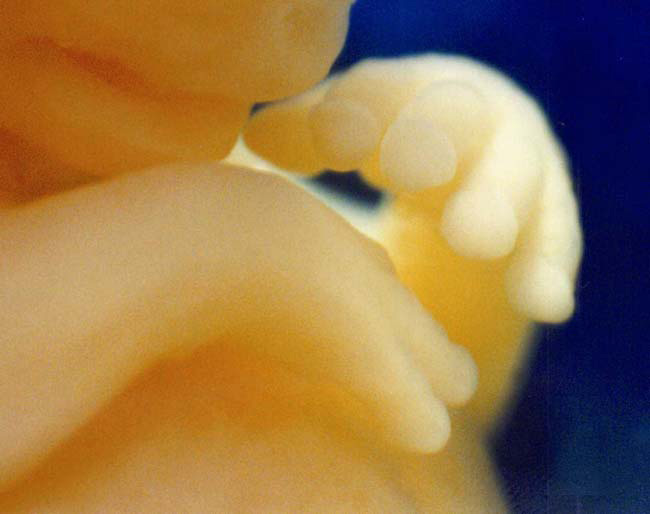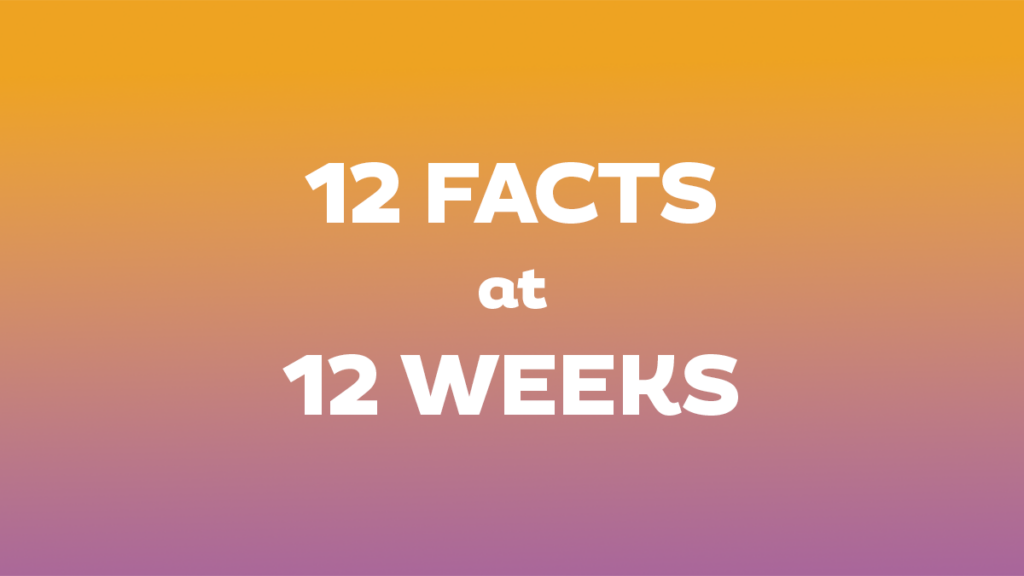Fetal Pain, Following the Evidence

This is Issue 7 in the On Science series.
During the Dobbs abortion case hearing, Justice Sotomayor made a number of problematic statements. She was unfamiliar with decreases in the edge of viability since Roe was handed down[1] (28 weeks then versus approximately 22 weeks gestation today,[2],[3],[4] with an increasing number of infants surviving at 21 weeks[5],[6]). As a neonatologist, I found perhaps even more distressing her claim that premature babies who are less than 25 weeks gestation cannot feel pain.[7] Physicians who think otherwise were labeled as “fringe” and a minority.[8] She also conflated fetal recoil in response to painful stimulation, with a deceased person’s reflex movements.[9] Good scientific evidence negates these misinformed statements.
Pain at Less than 25 Weeks Gestation
In the neonatal intensive care unit (NICU) infants who are not only 25 weeks, but as young as 21 weeks gestation, are cared for. These premature babies are born during the fetal period of development, defined as nine weeks gestation through term.[10] Thus, fetal pain is not a theory to anyone who works in the NICU. Our youngest patients demonstrate signs and symptoms of distress through increased heart rates, decreased oxygen saturations, curling of their toes, tightly clenching tiny fists, and/or facial grimacing. Additionally, a study done on premature babies while still in utero demonstrated that in response to painful stimulation (piercing of the chest wall to provide a blood transfusion), they released stress hormones.[11] This was seen in fetuses as young as 18 weeks gestation.[12] Another study demonstrated that pharmacological treatment of pain in edge-of-viability infants helps, but even better is combining this with proactively decreasing painful procedures (such as blood draws) and avoiding noxious stimulation (such as changing care times to a cue-based schedule as opposed to waking up a sleeping baby on a predetermined time frame), to achieve improved acute and long-term outcomes.[13] “The common theme in [one] Small Baby Program [was] to minimize painful stimuli while maximizing ‘joyful’ experiences[.]”[14] Contradicting what was stated during the Dobbs hearing,[15] there is substantial scientific and clinical evidence that babies who are less than 25 weeks gestation are conclusively affected by pain.
Pain in NICU Patients is Not Controversial
In the NICU, the presence of pain in the premature infants with fetal physiology is so uncontroversial that studies in this patient population focus on improving ways to not only decrease pain, but ways to provide a more soothing environment. The creation of “small baby units” within NICUs has shown statistically improved outcomes.[16],[17] Examples of the improved environment include: reassessing all surfaces and equipment that touch the premature babies’ translucent, fragile skin as well as increasing interactions with parents—particularly “kangaroo-care,” where the premature babies are placed skin to skin on their mother’s or father’s chest. If babies who are less than 25 weeks were not pain capable, making these changes would not make a difference, yet the data demonstrates that these changes measurably do. This is not “fringe”[18] or “minority”[19] information.
Perhaps Justice Sotomayor was reading earlier studies by pro-choice advocate Professor Stuart Derbyshire, who, after his multiple previous publications dismissing fetal pain,[20],[21] dramatically changed his position stating, “Overall, the evidence and a balanced reading of that evidence, points towards an immediate and unreflective pain experience mediated by the developing function of the nervous system from as early as 12 weeks.”[22] The early experience of pain is possible because the former requirement of a cerebral cortex for the existence of pain has been disproven.[23],[24],[25],[26] Adults with cortical brain injury[27] and infants with hydranencephaly (lack of cortical brain formation)[28],[29] have intact pain sensation. Subcortical structures such as the hypothalamic-pituitary system, amygdala, basal ganglia, and the brain stem account for “the feeling of painfulness and for the number of pain-triggered autonomic and hormonal reflexes. These components do not require cortical level activity”.[30]
Fetal pain is considerably different from and far more complex than a dead person’s spinal reflex—the comparison made by Justice Sotomayor.[31] “Synapses within the spinal cord begin to develop at 8 weeks”[32] but the fetal neurologic system is far more active and complex than just spinal mediated reflexes. Sensory receptors, the first requirement for nociception appear in the perioral area around 7 weeks gestation and then develop over the rest of the face, followed by palmar surfaces of the hands and soles of the feet. By 20 weeks “they are present throughout all of the skin and mucosal surfaces. …The nociceptive apparatus is initially involved in local reflex movements at the spinal cord level without supraspinal integration, [but] as these reflex responses become more complex, they, in turn, involve brainstem structures, through which other responses, such as increases in heart rate and blood pressure, are mediated.”[33] Lowery et al. note, “Pain perception…involves multi-layered networks of nociceptors, nerve fibers, neurons, and glia, distributed in multiple spinal and supraspinal nerves.… [However], there is no scientific evidence that function in multi-layered networks underlying pain perception wait for some cue to be “turned on.”[34] Living fetal reactions to noxious stimuli are far more complex than a post-mortem reflex. More importantly, because noxious stimuli trigger stress responses they “most likely affect the development of an individual at very early stages.”[35]
Consistent with the updated science of fetal neurobiology and clinical evidence, fetal surgery outcomes have been shown to improve when anesthesiologists prevent pain in both the mothers and the unborn babies.[36],[37] Though we now know this, as recently as 1992, doctors doubted that even term infants could feel pain, unbelievably performing surgeries on babies with insufficient anesthesia.[38] Fortunately, a randomized trial comparing infant open heart surgery outcomes with and without adequate anesthesia clearly demonstrated superior results for the babies given anesthesia.[39]
Today, informed by the data, doctors treat the pain of all babies under our care, including those less than 25 weeks gestation. Given the data, may our laws be informed by the same information that informs our medical care. Given the data, may all our hearts be moved to recognize fetal pain exists.
Robin Pierucci, M.D., M.A. is an associate scholar at the Charlotte Lozier Institute
[1] https://www.supremecourt.gov/oral_arguments/argument_transcripts/2021/19-1392_gfbi.pdf. Pg 21 ln 10.
[2] Schaffer A, Avery ME. Diseases of the Newborn. Philadelphia, PA: Saunders; 1971:23.
[3] Rysavy MA Ehret DEY, Extremely Preterm Birth Outcomes in Sweden, JAMA 2019;321(12):1163-1164. doi:10.1001/jama.2019.2020.
[4] Rysavy MA, et al., Assessment of an Updated Neonatal Research Network Extremely Preterm Birth Outcome Model in the Vermont Oxford Network. JAMA Pediatrics 2020;174(5):e196294. doi:10.1001/jamapediatrics.2019.6294.
[5] Elassar, Alaa. “The World’s Most Premature Baby Has Celebrated His First Birthday after Beating 0% Odds of Surviving.” CNN, Cable News Network, 19 June 2021, http://www.cnn.com/2021/06/19/us/worlds-most-premature-baby-birthday-trnd/index.html.
[6] Today Show. “’Miracle Baby’: Born at 21 Weeks, She May Be the Most Premature Surviving Infant.” TODAY.com, 21 Nov. 2018, http://www.today.com/health/born-21-weeks-she-may-be-most-premature-surviving-baby-t118610.
[7] https://www.supremecourt.gov/oral_arguments/argument_transcripts/2021/19-1392_gfbi.pdf. Pg 18, ln 22-25.
[8] Ibid., 18, 19.
[9] Ibid., 22.
[10] Moore KL, Persaud TVN. “The Second Week of Human Development.” Before We Are Born, Essentials of Embryology and Birth Defects, 4th editions. WB Saunders Company (Philadelphia). 1993.
[11] Gitau R, et al. Fetal Hypothalamic-Pituitary-Adrenal Stress Responses to Invasive Procedures Are Independent of Maternal Responses.” Journal of Clinical Endocrinology & Metabolism 2001;86(1):104–109. doi:10.1210/jcem.86.1.7090.
[12] Ibid., 104.
[13] Altimier L, Phillips RM. The Neonatal Integrative Developmental Care Model: Seven Neuroprotective Core Measures for Family-Centered Developmental Care. Newborn and Infant Nursing Reviews 2013;13(1):9–22. doi:10.1053/j.nainr.2012.12.002.
[14] Fathi O et al. Development of a small baby unit to improve outcomes for the extremely premature infant. J Perinatol. (2021). doi:10.1038/s41372-021-00984-0.
[15] https://www.supremecourt.gov/oral_arguments/argument_transcripts/2021/19-1392_gfbi.pdf. pg 17ff.
[16] Morris Mindy et al. Small Baby Unit Improves Quality and Outcomes in Extremely Low Birth Weight Infants. Pediatrics 2015;136(4):e1007-e1015. doi:10.1542/peds.2014-3918.
[17] Fathi O et al. Development of a small baby unit to improve outcomes for the extremely premature infant. J Perinatol. (2021). doi:10.1038/s41372-021-00984-0.
[18] https://www.supremecourt.gov/oral_arguments/argument_transcripts/2021/19-1392_gfbi.pdf. Pg 18.
[19] Ibid.,17.
[20] Derbyshire SWG. Can Fetuses Feel Pain? BMJ 2006;332: 909–912. doi:10.1136/bmj.332.7546.909.
[21] Derbyshire SWG. Foetal Pain? Best Practice & Research Clinical Obstetrics & Gynaecology 2010;24(5):647-655. doi: 10.1016/j.bpobgyn.2010.02.013.
[22] Derbyshire SWG, Bockmann JC. Reconsidering Fetal Pain. Journal of Medical Ethics 2020;46(1):3–6. doi:10.1136/medethics-2019-105701.
[23] Ibid.
[24] Lowery CL et al. Neurodevelopmental Changes of Fetal Pain. Seminars in Perinatology 2007;31(5):275-282. doi:10.1053/j.semperi.2007.07.004.
[25] Sekulic S et al. Appearance of Fetal Pain Could Be Associated with Maturation of the Mesodiencephalic Structures. Journal of Pain Research 2016;9:1031-1038. doi:10.2147/jpr.s117959.
[26] Vanhatalo S, Nieuwenhuizen OV. Fetal pain? Brain and Development 2000;22(3):145-150. doi:10.1016/s0387-7604(00)00089-9.
[27] Feinstein JS et al. Preserved emotional awareness of pain in a patient with extensive bilateral damage to the insula, anterior cingulate, and amygdala. Brain Structure and Function 2016;221:1499–1511. doi:10.1007/s00429-014-0986-3.
[28] Aleman B, Merker B. Consciousness without cortex: a hydranencephaly family survey. Acta Paediatr. 2014;103(10):1057-1065. doi:10.1111/apa.12718.
[29] Sekulic S et al. Appearance of Fetal Pain Could Be Associated with Maturation of the Mesodiencephalic Structures. Journal of Pain Research 2016;9:1031-1038. doi:10.2147/jpr.s117959.
[30] Vanhatalo S, Nieuwenhuizen OV. Fetal pain? Brain and Development 2000;22(3):145-150. doi:10.1016/s0387-7604(00)00089-9.
[31] https://www.supremecourt.gov/oral_arguments/argument_transcripts/2021/19-1392_gfbi.pdf. Pg 22.
[32] Brusseau R. Developmental Perspectives: Is the Fetus Conscious? International Anesthesiology Clinics 2008;46(3):11-23. doi:10.1097/aia.0b013e318181a88e.
[33] Ibid.
[34] Lowery CL et al. Neurodevelopmental Changes of Fetal Pain. Seminars in Perinatology 2007;31(5):275-282. doi:10.1053/j.semperi.2007.07.004.
[35] Vanhatalo S, Nieuwenhuizen OV. Fetal pain? Brain and Development 2000;22(3):145-150. doi:10.1016/s0387-7604(00)00089-9.
[36] Bellieni CV et al. Is Fetal Analgesia Necessary during Prenatal Surgery? The Journal of Maternal-Fetal & Neonatal Medicine 2018;31(9):1241-1245.
doi: 10.1080/14767058.2017.1311860.
[37] van de Velde M, De Buck F. Fetal and Maternal Analgesia/Anesthesia for Fetal Procedures. Fetal Diagnosis and Therapy 2012;31(4):201-209. doi:10.1159/000338146.
[38] Anand KJS, Hickey PR. Halothane–Morphine Compared with High-Dose Sufentanil for Anesthesia and Postoperative Analgesia in Neonatal Cardiac Surgery. New England Journal of Medicine 1992;326(1):1–9. doi:10.1056/nejm199201023260101.
[39] Ibid.


























